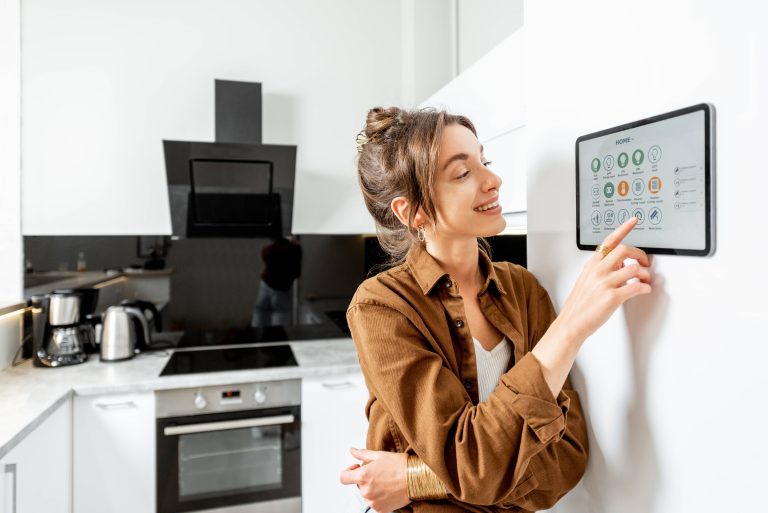
Smart homes have opened up new avenues of convenience and automation, making life easier and more efficient. From voice-activated lighting to smart thermostats and security cameras, the integration of smart devices into our daily lives is growing rapidly. However, with this convenience comes an increased risk of unauthorized access and pairing of devices. Hackers and cyber-criminals are continually looking for new ways to exploit vulnerabilities in smart home systems. In this blog post, we will explore some essential strategies to prevent unauthorized pairing of smart devices, ensuring the privacy and security of your smart home.
Understanding the Risks
Before diving into the strategies, it’s important to understand the risks associated with unauthorized pairing. When a device is paired without your consent, it can lead to:
1. Loss of Privacy: Unauthorized pairing can lead to unauthorized access to security cameras, microphones, and other sensitive devices, compromising your privacy.
2. Data Theft: Personal data, including passwords and financial information, can be stolen.
3. Device Control: Hackers can control your devices, leading to potential damage or misuse.
4. Security Breaches: Vulnerabilities can be exploited to deploy harmful software like malware or ransomware.
Strategies to Secure Your Smart Devices
1. Use Strong and Unique Passwords
One of the easiest ways to protect your smart devices is by using strong, unique passwords for each device and online account. Avoid using common passwords or easily guessable information like birthdays or pets’ names. Consider using a password manager to generate and store complex passwords.
2. Enable Two-Factor Authentication (2FA)
Two-factor authentication adds an additional layer of security by requiring a second form of verification in addition to your password. This could be a text message, an email, or an authentication app. Enabling 2FA can significantly reduce the risk of unauthorized access.
3. Keep Firmware and Software Updated
Manufacturers regularly release updates to fix security vulnerabilities and improve device performance. Ensure that your devices are always running the latest firmware and software versions. Set devices to update automatically if the option is available.
4. Secure Your Wi-Fi Network
Your Wi-Fi network is the gateway to all your smart devices. Securing it is crucial to keeping them safe from unauthorized access:
– Change Default Network Names and Passwords: The default settings are often common knowledge and can be easily exploited by hackers.
– Use WPA3 Security: WPA3 is the latest and most secure Wi-Fi encryption protocol.
– Disable WPS (Wi-Fi Protected Setup): While convenient, WPS can be a security vulnerability allowing easy access to your network.
5. Create a Separate Network for Smart Devices
Using a dedicated network for your smart devices can isolate them from your primary network, providing an additional layer of security. Even if hackers gain access to your smart device network, they will not have access to other critical devices like computers or smartphones.
6. Regularly Check Device Pairing Status
Regularly audit your smart devices to ensure no unauthorized devices have been paired. Most smart home systems allow you to check which devices are connected and provide options to disconnect or block unknown devices.
7. Disable Unused Features
Many smart devices come with features and connections that you may not use, such as Bluetooth or NFC. Disable these functionalities if they are not needed, as they can introduce potential vulnerabilities.
8. Be Cautious with Third-Party Apps and Services
While third-party apps can add functionality to your smart devices, they can also pose security risks. Only use trusted apps from reputable sources and regularly review the permissions they request. Remove any apps that are no longer in use.
9. Use a Firewall
A firewall can provide an additional layer of protection by filtering incoming and outgoing traffic to your network. Many modern routers come with built-in firewalls that can be configured to enhance security.
10. Educate Yourself and Your Family
Awareness is the first step to protecting your smart home. Educate yourself and your family members about the potential risks and best practices for smart home security. This can include recognizing phishing attempts, avoiding suspicious links, and understanding the importance of strong passwords.
11. Implement Device-Specific Security Features
Many smart devices come with built-in security features that can provide additional protection. For example:
– Camera Privacy Settings: Ensure your security cameras are configured for maximum privacy, such as disabling remote viewing when not needed.
– Voice Assistants: Limit voice assistant functionality to specific users and disable features that can be exploited, such as purchasing capabilities.
12. Monitor and Respond to Security Alerts
Set up notifications for any security events or alerts related to your smart devices. Immediate responses to potential threats can mitigate risks and prevent unauthorized pairing.
Conclusion
The proliferation of smart devices in our homes brings with it the need for increased vigilance and proactive security measures. By implementing these strategies, you can significantly reduce the risk of unauthorized pairing and protect your privacy and security. Remember, a smart home should also be a safe home. Regularly review and update your security practices to stay ahead of potential threats and keep your smart environment secure.







